6 hostages to be freed Sat.; Hamas says bodies of Bibas mom, kids set for Thurs. return
Family of Shiri, Ariel and Kfir Bibas ‘in turmoil’ over Hamas announcement, has not received Israeli confirmation; only 3 living hostages were to go free this week, but Hamas will instead release all 6 of phase 1’s remaining living hostages
Mom Shiri, toddler Ariel and baby Kfir Bibas are dead at the hands of Hamas
All six remaining living hostages slated to be released in the first phase of the Gaza ceasefire deal will be freed Saturday, Israeli and Hamas officials said Tuesday, in a surprise move reportedly linked to growing worries that the ceasefire and captive release deal in the Gaza Strip could collapse.
Encouragement over the expedited release, which will include two Israelis held in the Strip for over a decade, was tempered, however, with an announcement from the terror group that it would also transfer the bodies of mother Shiri Silberman Bibas and her two young children Ariel and Kfir back to Israel, dampening hopes that the three might still be found alive.
The Bibas family said it was “in turmoil” over the announcement and had not received confirmation from Israel.
Hamas leader in Gaza Khalil al Hayya said that among the six living hostages will be Israelis Avera Mengistu and Hisham al-Sayed, who have been held by Hamas since entering the Strip on their own in 2014 and 2015, respectively.
Row 1 (L-R): Omer Wenkert, Eliya Cohen, Tal Shoham; Row 2: Omer Shem-Tov, Avera Mengistu, Hisham al-Sayed.
The other four — Tal Shoham, Omer Shem-Tov, Omer Wenkert, and Eliya Cohen — were kidnapped during the October 7, 2023, Hamas attack on southern Israel.
Al Hayya said that the releases would be conditioned on Israel living up to its side of the first phase of the deal, which includes the release of hundreds of Palestinian inmates, including many serving life sentences for murder, a cessation of fighting in the Strip and the entry of aid and other equipment into the beleaguered enclave.
Under the original agreement with Hamas, only three living hostages were scheduled to go free on Saturday, and the remaining three a week later. Israel had been pushing hard to get all six out as early as possible, spurred by US President Donald Trump’s call last week for all Israeli hostages to go free in a single group.
An Israeli official said the updated terms had been reached during talks in Egypt last week.
“If the agreement in Cairo is carried out, it will be an important achievement for Israel,” the official said.
The families of the living hostages have been updated, The Times of Israel has learned.
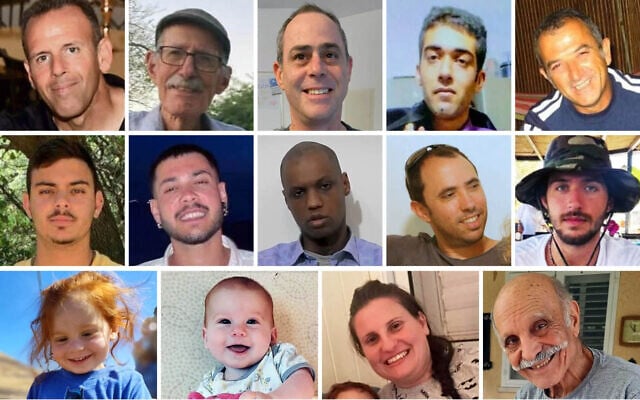
The Prime Minister’s Office also confirmed that four dead hostages would be released on Thursday, but did not name them. The only name on the phase one list whose death Israel has confirmed is Shlomo Mantzur.
Israel has said it has “grave concerns” for the fate of Silberman Bibas and her young sons.
Hamas’s al Hayya said earlier Tuesday that members of the Bibas family would be among the four bodies to be handed over on Thursday.
Responding to the announcement, the family stressed: “Until we receive definitive confirmation, our journey is not over.”
“We ask the media and the public to respect our privacy and refrain from contacting us about this matter,” relatives added.
Silberman Bibas, 32 at the time, was kidnapped from her Nir Oz home on October 7, with her young boys Kfir, 4 at the time, and Ariel, who was only nine months old. Husband and father Yarden Bibas, who was kidnapped separately from their home after he left the safe room hoping to distract the gunmen and save his family., was freed from Gaza on February 1.
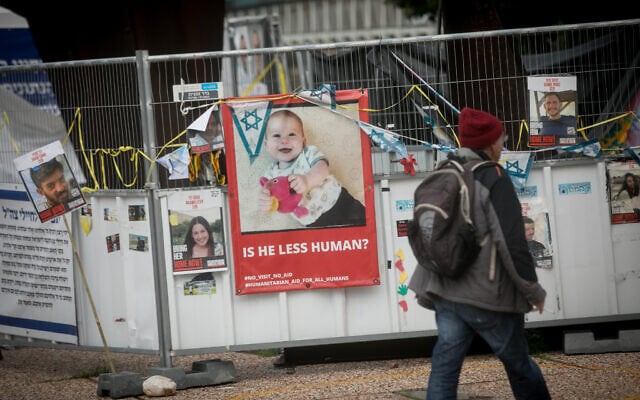
Footage from October 7 showed Silberman Bibas clutching the boys as they were led away by Hamas gunmen, and the IDF later released video it found showing them being moved between buildings in Khan Younis, but their fate has remained unknown.
Hamas claimed in November 2023 that Silberman Bibas and the kids were killed in an IDF strike. Israel called the claim cruel propaganda and did not confirm it.
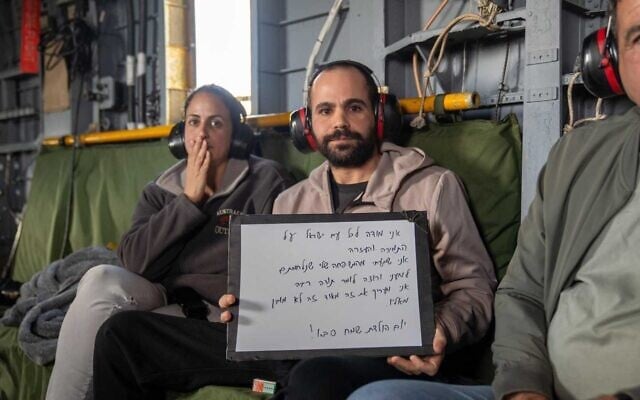
In his first statement, days after his release, Yarden appealed to Prime Minister Benjamin Netanyahu: “Bring my family back. Bring my friends back. Bring everyone home.”
He added: “Sadly, my family hasn’t returned to me yet. They are still there. My light is still there, and as long as they’re there, everything here is dark.”
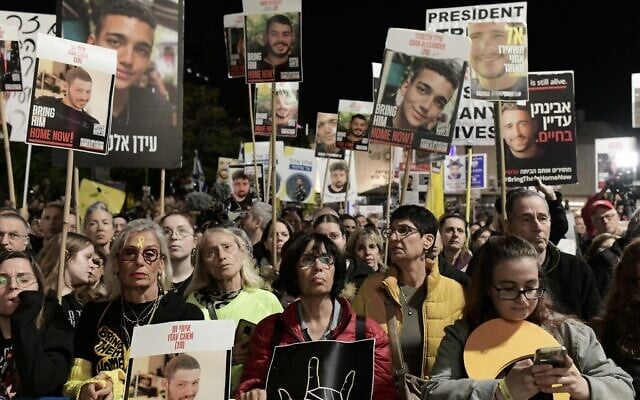
Hamas is also required by the agreement with Israel to release four more bodies of hostages next week, according to the PMO, completing the release of the 33 Israeli hostages in phase one.
The annex of the ceasefire agreement that deals with the release of the bodies was revealed on Monday evening but has not been officially published.
Hamas will, in turn, be securing the early release of 47 Hamas members who were released in the 2011 exchange for former IDF soldier Gilad Shalit but later rearrested by Israel. The original deal had stipulated that those 47 prisoners be released by the final day of phase one in early March.
The terror group first raised the idea of expediting the release of the remaining living hostages listed under phase one, two Israeli officials told Axios.
“Hamas feared that the agreement will not last until day 42 when these 47 prisoners were supposed to be released because Israel will blow it up,” an Israeli official told Axios.
The decision to expedite the releases indicates that both sides think that the hostage deal might collapse before the 42nd day of phase one, Axios speculated.
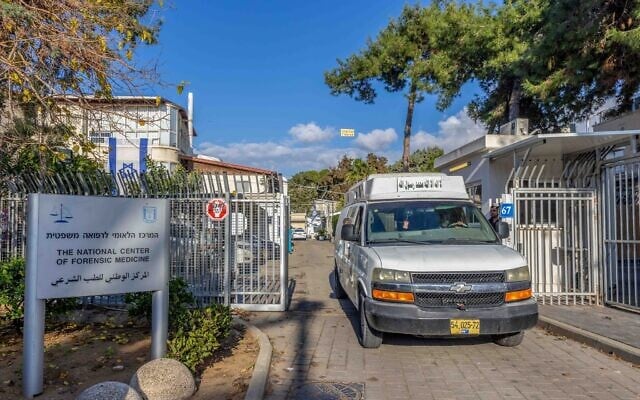
Identifying the bodies
Israel on Tuesday was preparing to receive and identify the four bodies on Thursday. The bodies will be transported to Israel’s National Center of Forensic Medicine (Abu Kabir) in Jaffa by Israel Defense Forces ambulances for identification.
Families will be updated when the bodies have been properly identified, according to Hebrew media, and only after that will the details be released to the public. Some news outlets have said they will not broadcast photos or footage of the bodies or coffins distributed by Hamas out of respect for the bereaved.
The Health Ministry reminded the public that these are “sensitive times” for the loved ones of the slain hostages and urged everyone to respect their privacy.
The Kan public broadcaster reported that the bodies would be identified within 48 hours at Abu Kabir, which has been renovated to provide areas for the families to gather if necessary according to the circumstances in which the remains are received.
The head of the Israel Police’s forensics division, Lt. Col. Aliza Raziel, told Channel 12 on Tuesday that together with Abu Kabir and the IDF, the authorities were “ready to receive the bodies and activate all existing scientific identification methods.”

She said that authorities began collecting biometric data from hostages, including dental records, fingerprints, and DNA, soon after the hostages were taken “so that when the time comes, we could compare and identify them accurately.”
Volunteer dentists have been trained to identify the bodies, Raziel told Channel 12, adding that fingerprints could also be used, depending on the condition of the remains.
“And in cases where these options cannot be used, the DNA test remains, for which we have prepared all the data in advance,” she explained, noting that the identification system used in Israel is considered one of the most advanced in the world.
Phase two talks this week
Israel, meanwhile, will in the coming days begin negotiations on the second phase of the Gaza ceasefire deal, including an exchange of the remaining Israeli hostages for more Palestinian security prisoners, Foreign Minister Gideon Sa’ar said, adding that Israel is demanding a complete demilitarization of the enclave.
It is believed that another 24 living hostages could be released under phase two of the deal.
Sa’ar told foreign journalists in Jerusalem Tuesday that the talks will begin “this week.”
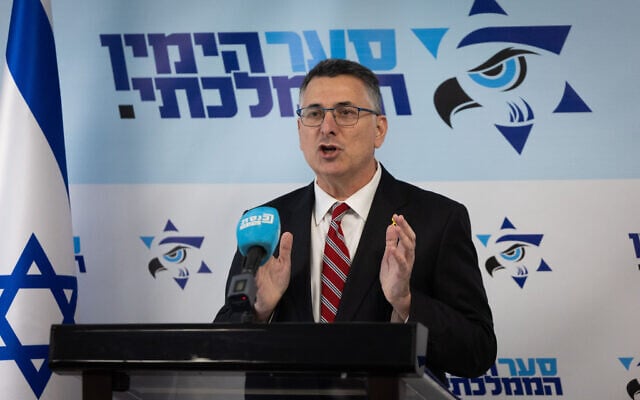
“We had a security cabinet meeting last night. We decided to open negotiations on the second phase. It will happen this week,” he said of the talks, which were originally supposed to start on February 3.
Strategic Affairs Minister Ron Dermer will lead talks on phase 2, according to Channel 12, replacing Mossad chief David Barnea, who led previous rounds.
However, an Israeli official told The Times of Israel that the negotiating team was still awaiting approval to head to Qatar for the talks.
Hayya, the senior Hamas official, said in a statement that Hamas is prepared to immediately begin negotiations regarding phase two of the deal.
Sa’ar said Israel will not accept any scenario in which Gaza terror groups retain weapons.
A “Hezbollah model” in Gaza would not be acceptable to Israel “and therefore we need a total demilitarization of Gaza and no presence of the Palestinian Authority,” he said in a press conference.
He added that Israel was aware of an alternative plan by Arab states for Gaza made to counter US President Donald Trump’s proposal to redevelop the Strip under US control, which Prime Minister Benjamin Netanyahu has said is worthy of exploration.
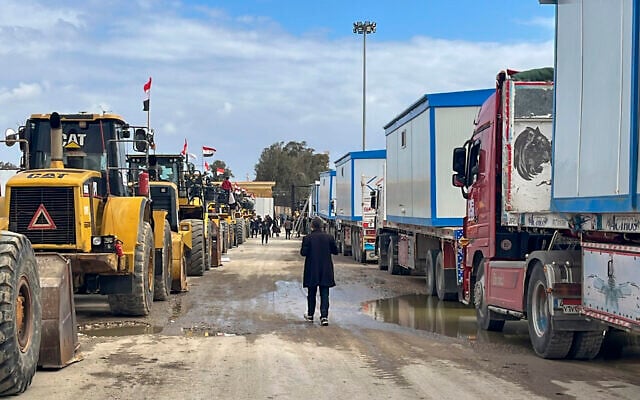
Israel will not support a plan that would see civilian control of Gaza transferred from Hamas to the Palestinian Authority, Sa’ar said.
The ceasefire stipulates that the parties must begin negotiations regarding phase two of the deal no later than the 16th day of the first phase, which was on February 3, but talks have yet to begin. The second phase provides for the end of the war and the withdrawal of all IDF troops from Gaza.
Hamas has so far released 24 hostages — 19 Israeli civilians and female soldiers, and five Thai nationals — during the current ceasefire, which began on January 19. The terror group also freed 105 civilians during a weeklong truce in late November 2023, and four hostages were released before that.
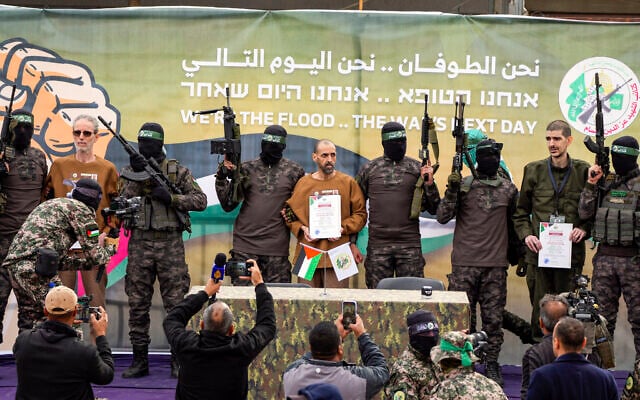
Seventy captives remain in Gaza, including the bodies of 35 confirmed dead by the IDF.
Eight hostages have been rescued by troops alive, and the bodies of 40 hostages have also been recovered, including three mistakenly killed by the Israeli military as they tried to escape their captors.
Hamas is also holding al-Sayed and Mengistu, the two Israeli civilians who entered the Strip in 2014 and 2015, as well as the body of an IDF soldier who was killed in 2014. The body of another IDF soldier, also killed in 2014, was recovered from Gaza in January.
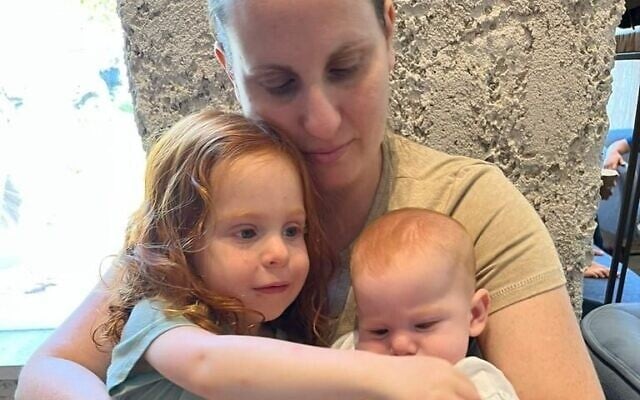
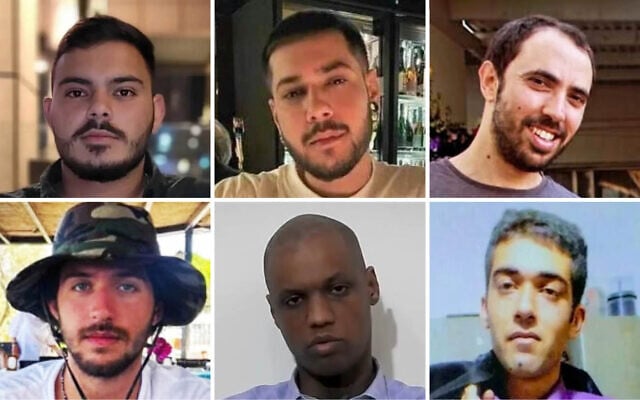
No comments:
Post a Comment